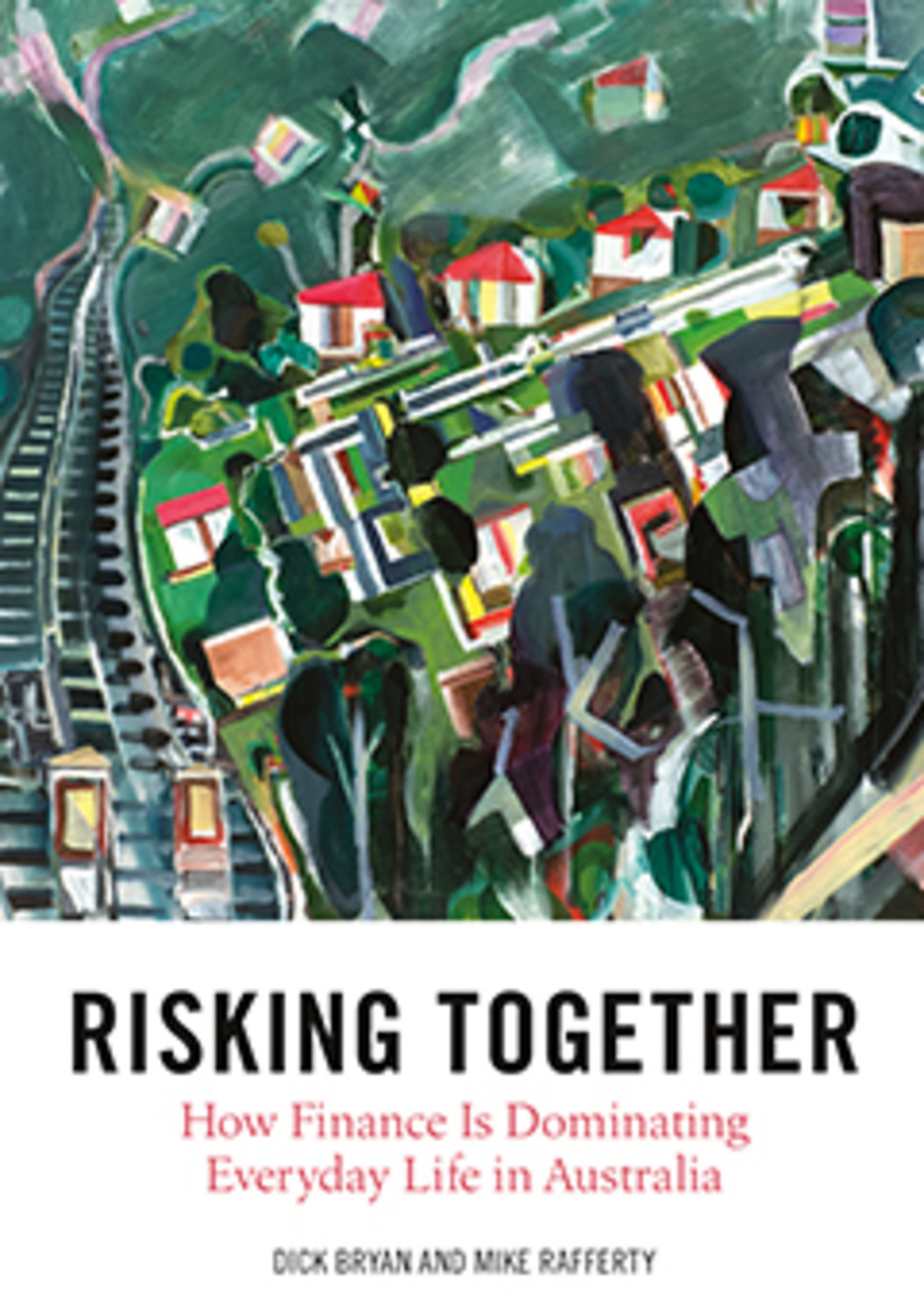
Australia is in the midst of a major social and economic experiment that centres on financial risks being shifted onto ordinary people. We are being asked to manage ourselves as if we are businesses, and these businesses are being squeezed tighter and tighter.
Households are taking on more risk and financial stress, implicitly accepting demands that they be stable, secure payers. What is driving this, and how might we resist it?
Risking Together: How Finance is Dominating Everyday Life in Australia explains what is systematic about this ‘risk-shifting’ onto households, explores the frontier of financialised profit making, and includes suggestions on pushing back.
‘This brilliant and timely book shows how a silent yet pervasive transformation has taken place in Australian society … Bryan and Rafferty show how finance has become implicated in all aspects of social life and how mundane household financial transactions are now central to the economic stability of the nation.’
Lisa Adkins, Head of the School of Social and Political Sciences, University of Sydney and Academy of Finland Distinguished Professor, University of Tampere, Finland.
‘In the world of post-blockchain technologies we're looking to build new ways of risking together. The work of Bryan and Rafferty has been inspiring. This new book presents us with concepts and methods of analysis that are groundbreaking.’
Akseli Virtanen, CEO, Economic Space Agency, Oakland, California and Berlin.
Dick Bryan is professor emeritus of political economy at the University of Sydney.
Michael Rafferty is a political economist with a research interest in finance and labour. He has published widely on these topics and has been a regular commentator in the media. He teaches international political economy at RMIT University.
List of figures
List of tables
List of abbreviations
Preface
Introduction
1. Financial ways of thinking and the risks they reveal2. Risk and the intrusion of finance into daily life
3. Financialised work: re-thinking employment through finance
4. Finance beyond work: debt, superannuation and securitisation
5. A hedge fund of your own life: households in financial markets
6. Making households profitable for finance
7. Pushing back in a financialised way
"Bryan and Rafferty’s object of analysis in Risking Together is of great sociological, psychological, and social interest … The analysis provided throughout the book is comprehensive and insightful. The examples of risk-shifting are abundant and extensive.”
Mohamed Mourad The Economic and Labour Relations Review
“Bryan and Rafferty present a detailed exposition of the ways in which households based primarily in the Anglosphere have been transformed from relative oases of economic stability in the post-1945 period to vehicles of risk and thereby the means of profit for certain types of investor.”
Michael Keaney Review of Radical Political Economics
'Dick Bryan and Mike Rafferty look at how the financialisation of the global economy has swept up the lives of ordinary people who had nothing to do with playing the financial markets. In the process, their lives have come to mirror the risks of stock exchange, derivate and currency market speculation.'
Neville Spencer Greenleft Weekly
‘Dick Bryan and Michael Rafferty offer a provocative caveat in Risking Together, arguing that wealth and income inequality do not fully, or even best, explain the financial distress of middle class Australians ... It is therefore an invaluable addition to the cultural economy canon, an introduction suitable for both undergraduate university students and the workers, consumers and citizens whose story it tells.’
Carolyn Hardin Journal of Cultural Economy
Size: 210 × 148 × 14 mm
250 pages
24 b&w illustrations and 6 b&w tables
Copyright: © 2018
ISBN: 9781743325728
Publication: 20 Jan 2018
Series: Public and Social Policy Series
